Why Does My Dog Walk Behind Me? (Meaning Explained)
Training a new puppy or dog is exciting, challenging, and rewarding. There are many different steps in the training process, including potty training, controlling excessive barking or chewing, and commands like sit, stay, come, and fetch. Today, I’m talking about walks and diving, mainly why your dog may be walking behind you all the time.
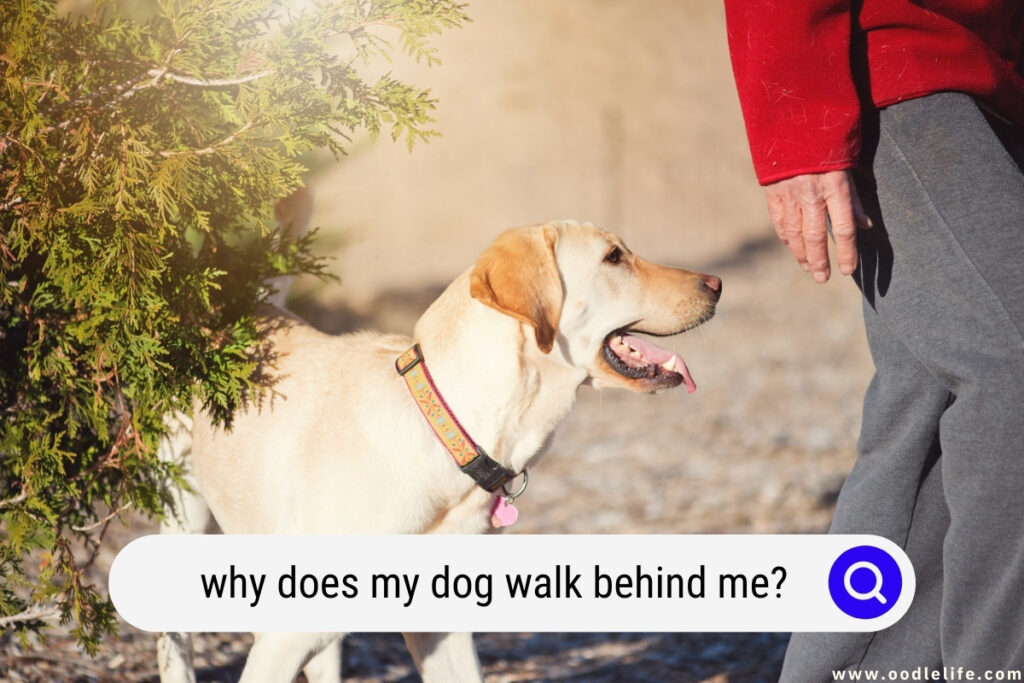
Your Dog Could Be Submitting to You
One of the most common reasons your furry friend may constantly walk behind you is that they recognize you as the alpha and submit to you. This trait stemmed from thousands of years when dogs traveled in packs. You are the pack leader in your dog’s eyes, so they follow your direction.
This behavior could be happening because you have accidentally taught your dog that walking behind you is also a reward. If you randomly give your dog treats while they are behind you on walks or if you let them constantly stop to sniff while they are walking behind you, that could be why this continues to happen on your walks.
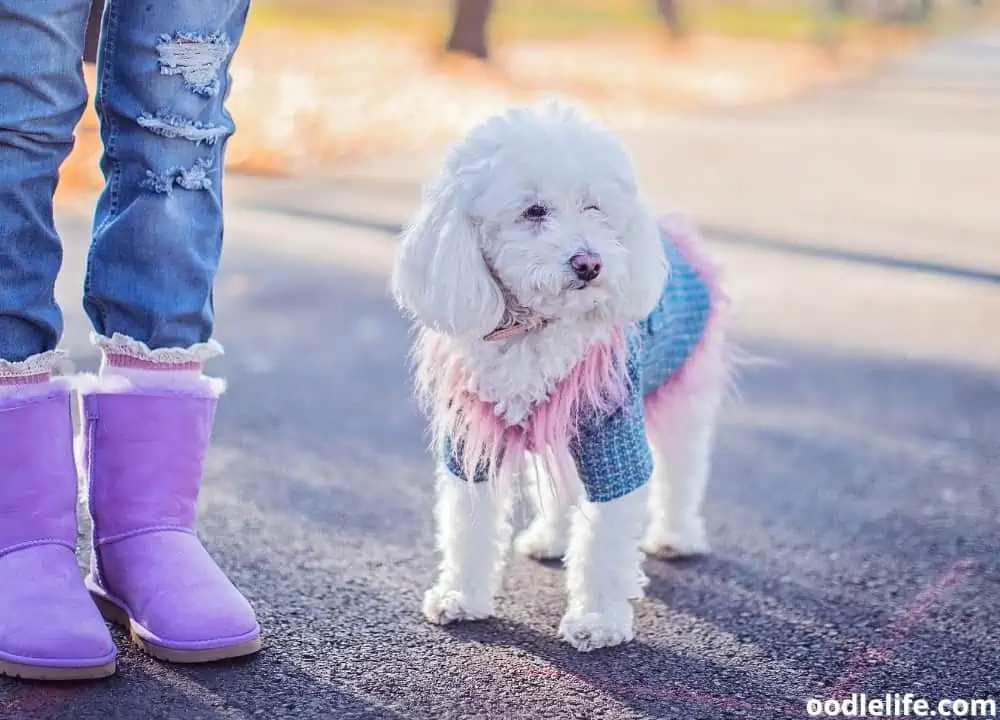
Your Dog Could Be Afraid
This topic is not fun to discuss, but certainly a necessary one. If you’re using excessive force or strong negative reinforcement to train your dog, they could be walking behind you because they are afraid of you. These training methods are inappropriate and should not be used, as it could result in your dog’s behavior declining even further (not to mention that force can hurt your dog).
There’s nothing wrong with scolding your dog when they do something wrong, but positive reinforcement generally tends to work better than negative. Instead of using force and potentially harming your dog when they behave poorly, give your dog a treat for good behavior and habits. Praise also goes a long way! You want your dog to respect you, but they also need to trust you and not be fearful.
Your dog also may not be afraid of you but fearful of other dogs. If you walk in an area that is highly trafficked by other dog walkers or if your dog only walks behind you when there is another dog approaching, this could be a sign that your dog is timid around their own kind. This can be prevented by proper socialization as a puppy.
If your dog is older and past the socialization stage early on, do not fret. You can still socialize your pup by visiting dog parks, introducing them to a gentle, tolerant dog, or visiting a doggy daycare. Obviously, all of these measures will not work one hundred percent of the time, so be patient with your furry friend and work with your dog to find the methods of socialization that are the best fit.
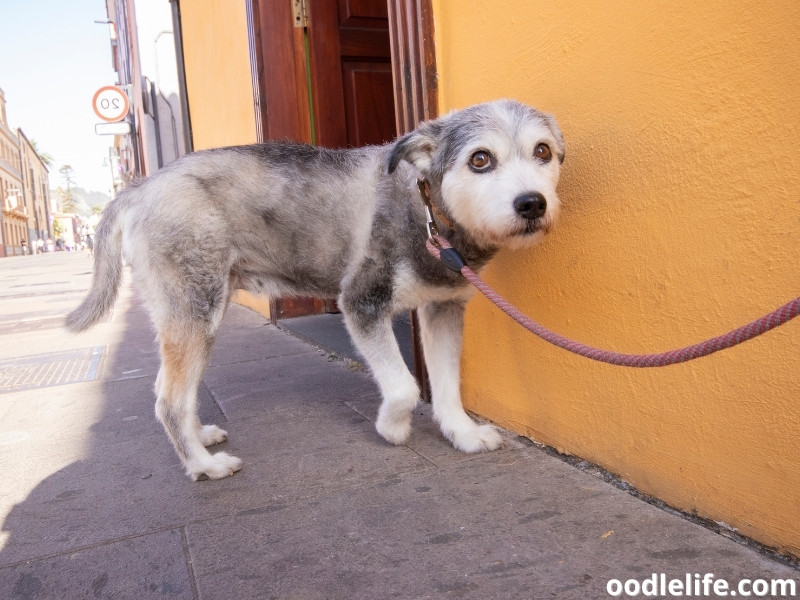
Your Dog Could Be Using Their Nose
Your dog may be lagging behind you because they have found many smells to investigate as you walk along, particularly if you’re in an unfamiliar area or if another dog has recently been in the area. Dogs have more than one hundred thousand scent receptors!
Dogs’ smell is their strongest sense and can use it to their advantage to investigate the comings and goings of the neighborhood or park you’re walking through, from other dogs’ scent markers to a tasty treat someone has accidentally dropped on the ground.
While excessive sniffing is harmless, it can be frustrating if you don’t have time for a long walk. However, you don’t want to be too hard on your dog when they stop to sniff frequently because they are simply becoming aware of their surroundings. Here are some tips to curb uncontrollable sniffing:
- Pick out specific landmarks on your walk that your dog usually wants to sniff and intentionally stop and let them sniff for a minute.
- Use leash slack to your advantage if you have a retractable leash. You never want to jerk the leash and potentially hurt your dog, but you can give your dog more slack when they are allowed to sniff and tighten it up when it’s time to move along.
- Walk the same route every day. This will familiarize your dog with the smells of the area, and once they become accustomed to them, they will not stop as often.
- Bring some treats along with you while you walk. You can use verbal commands such as “leave it” or “walk” and reward your dog with praise and a treat when they obey you.
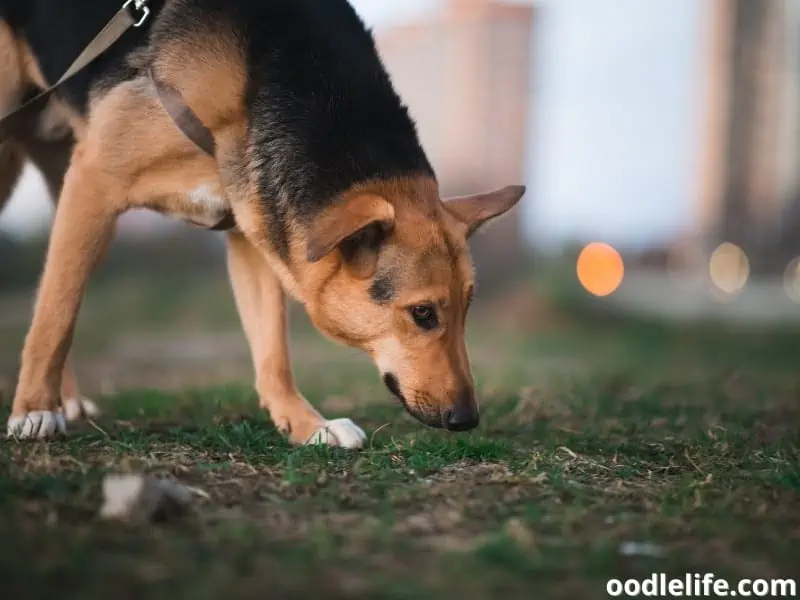
Your Dog Could Be In a New Place
As noted above, picking a consistent walk route can drastically curb your dog’s instincts to stop and sniff, so if you find your dog walking behind you when you explore a new park, path, or walking route, this is the obvious answer. It is unexplored territory, so your dog will want to sniff around a bit. If you bring your dog to a new location and they are not sniffing but still walking behind you, they could also be cautious of their new surroundings.
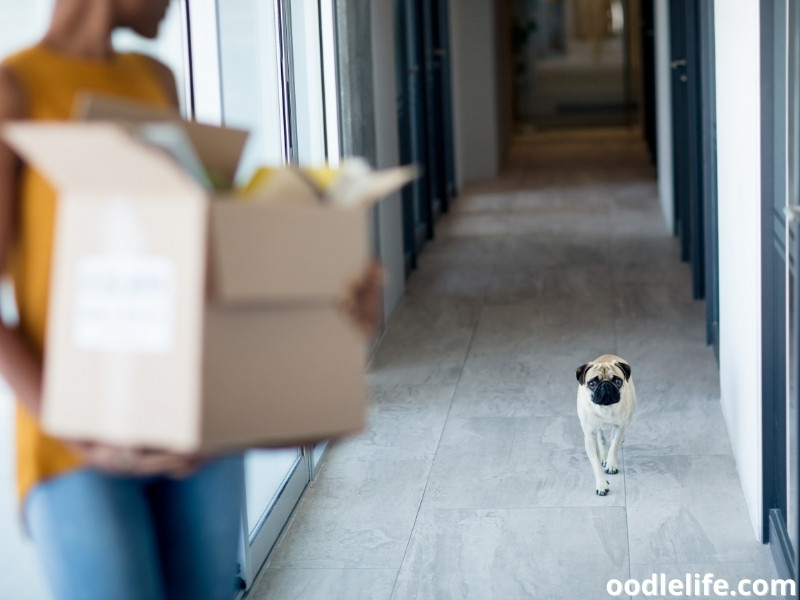
Your Dog Could Be Uncomfortable
This is an important one to consider to ensure the comfort of your canine companion. Dogs can walk behind their humans because their harness is digging into their shoulders as they walk, their collar could be too tight when the leash pulls at their neck, or because they’re thirsty or hungry. Try swapping out your dog’s harness, loosening their collar, and be sure to pack some food and water, especially if you’re going for a nice, long walk.
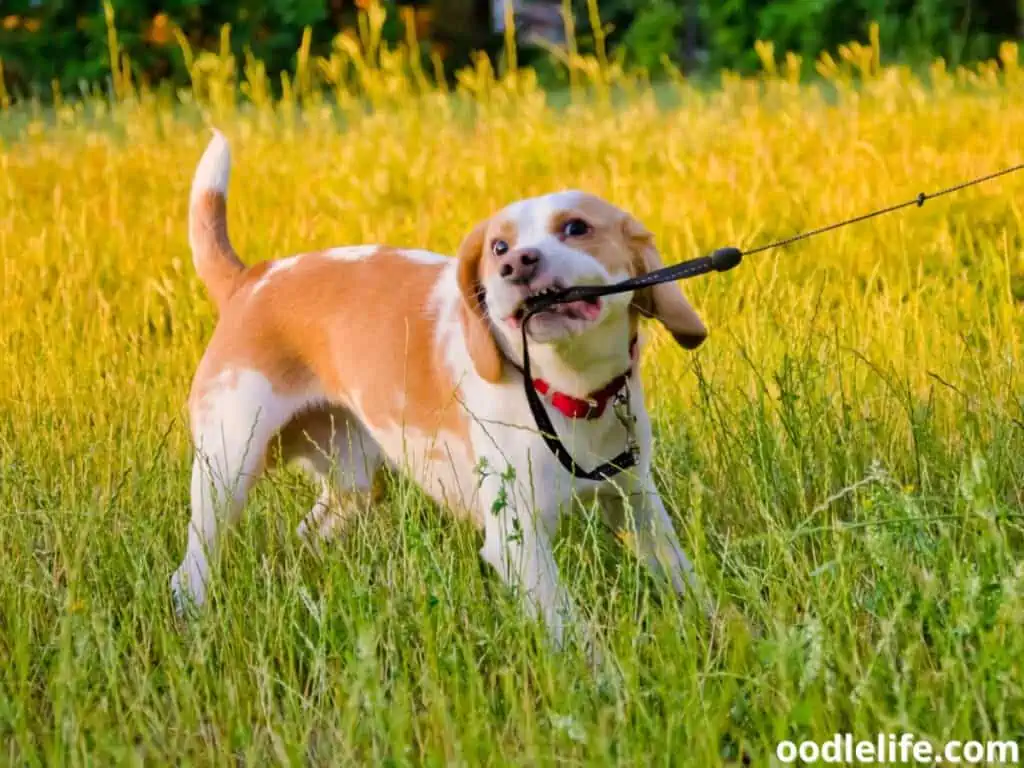
It Could Be Time for a Nap
Finally, a common reason your dog may be walking behind you is that they are simply tired! After a long walk, your dog will probably not have as much energy as they did at the start, so be sure to give them breaks when they need it (and pet them, of course). Once you’re home safe and sound, give your dog a nice drink of water, and then it’s probably time for a nice nap.
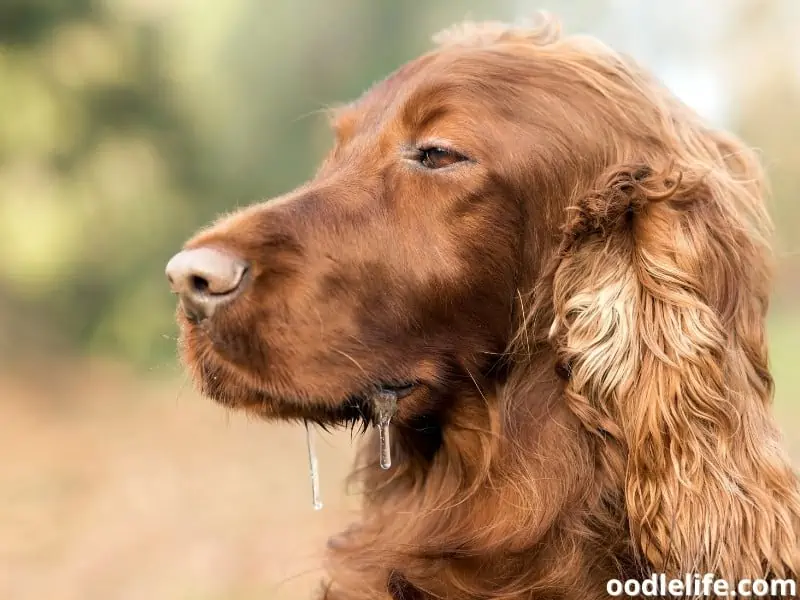
Tips for Training Your Dog to Walk Next to You
Training your dog to heel is actually one of the easiest and most useful commands you can teach your companion. Local clubs are an an excellent resource when training your dog, and they offer the following tips when you begin teaching your pooch how to heel:
- Treats are your best friend. If you’re using training treats, they should be fine as is, but if you’re using something more tempting like cheese or turkey, be sure to cut it up into tiny pieces since you will need quite a bit of it.
- Say your dog’s name and point to your left side. Traditionally, the left side is where dogs walk, but either is fine. Whatever is most comfortable for you and your dog should work.
- Once your dog is next to you, reward them verbally and give your dog a small treat. After repeating this step a few times, stop saying their name and simply point so that your dog knows to stand by your side.
- Once your dog recognizes the point as their cue to heel, you can start walking. Continue praising and/or rewarding your dog as they stay next to you instead of behind you.
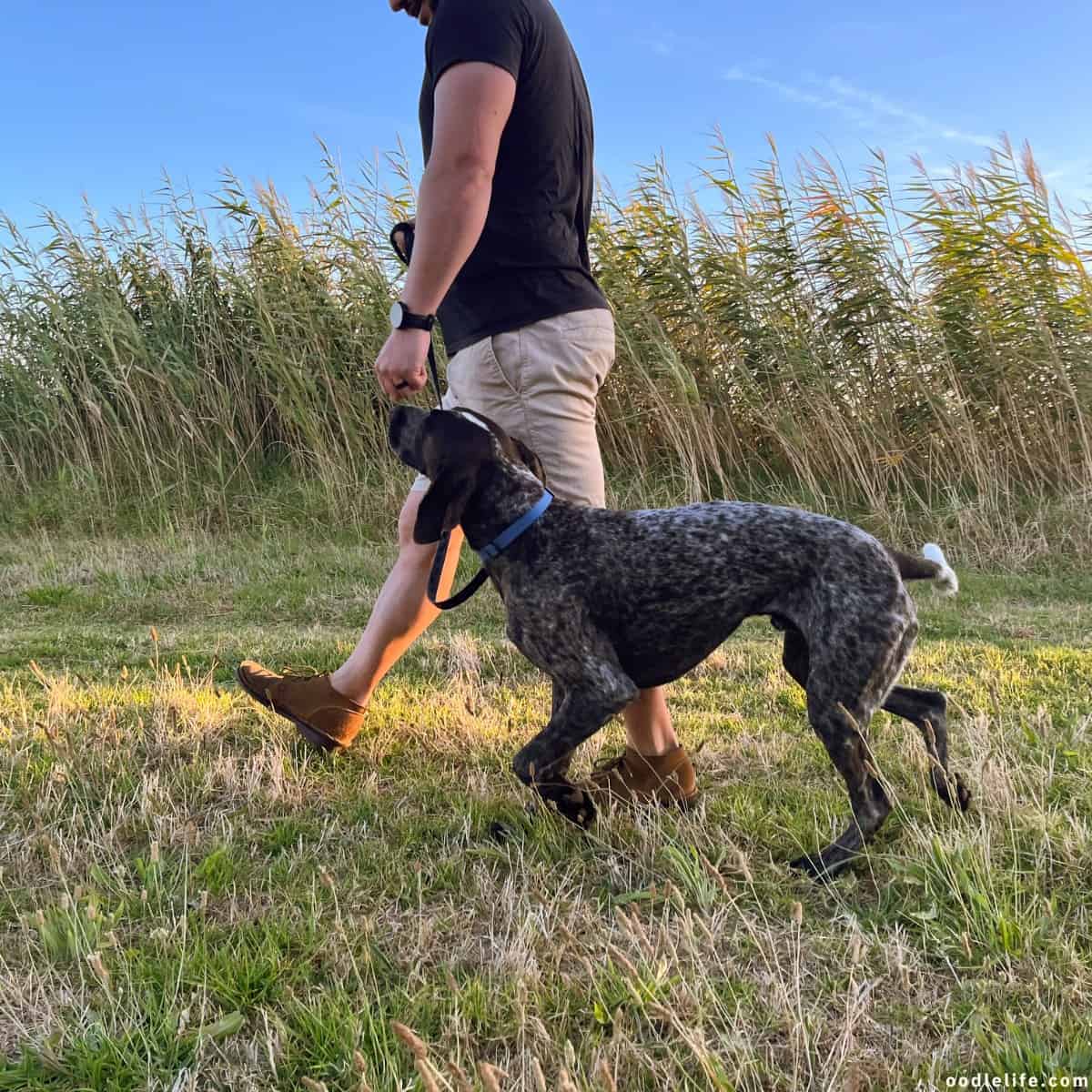
Keep up the training, and your dog will be walking by your side in no time!